|
||||
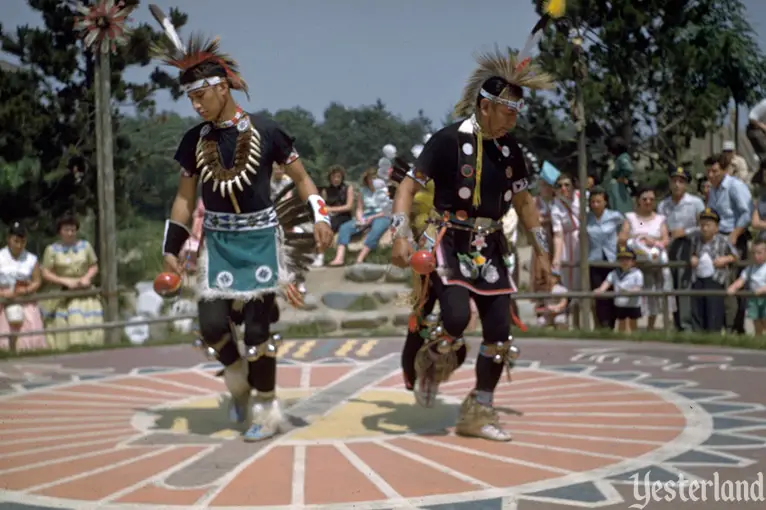
Photo by Helmut Weiss, 1958 |
||||
|
While visiting the Indian Village, don’t miss a performance at the Dance Circle. You’ll gain a greater appreciation for Native American traditions as you watch six authentic tribal dances: the Omaha (called the War Dance by white settlers); the Shield and Spear; the Eagle; the Zuni-Comanche; the Mountain Spirit, and the Friendship dances. |
||||
|
|
||||
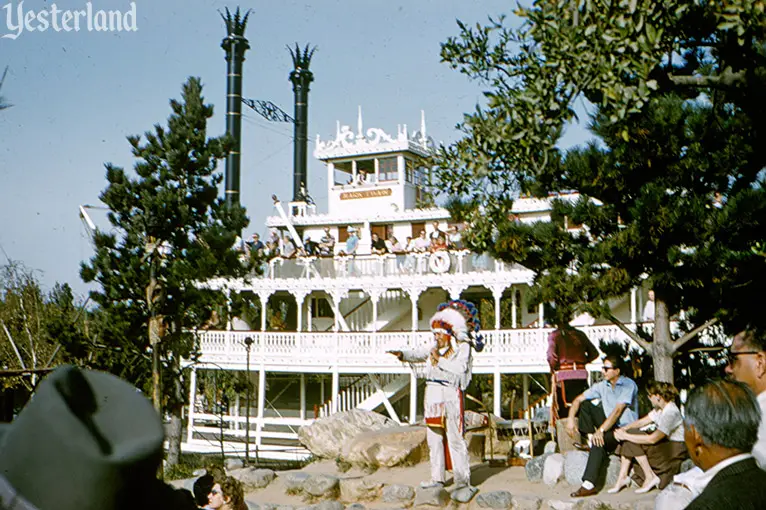
Photo by Roger J. Runck, 1959, courtesy of Robin Runck On the shores of the Rivers of America |
||||
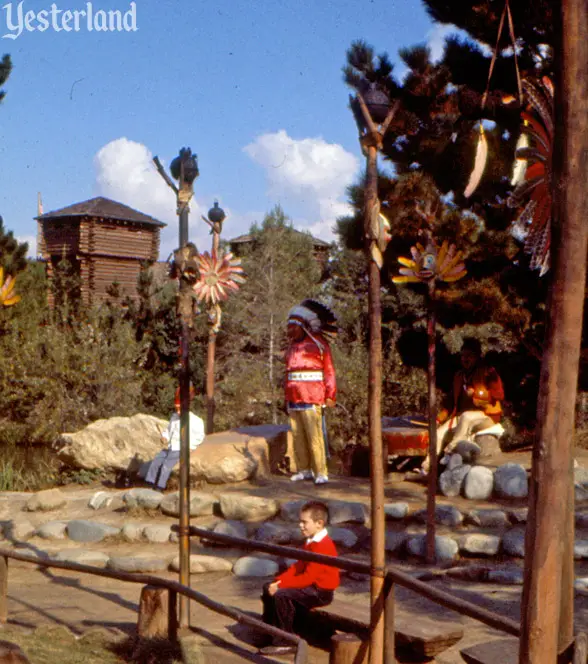
Photo by Roger J. Runck, 1961, courtesy of Robin Runck Across the water from Fort Wilderness |
||||
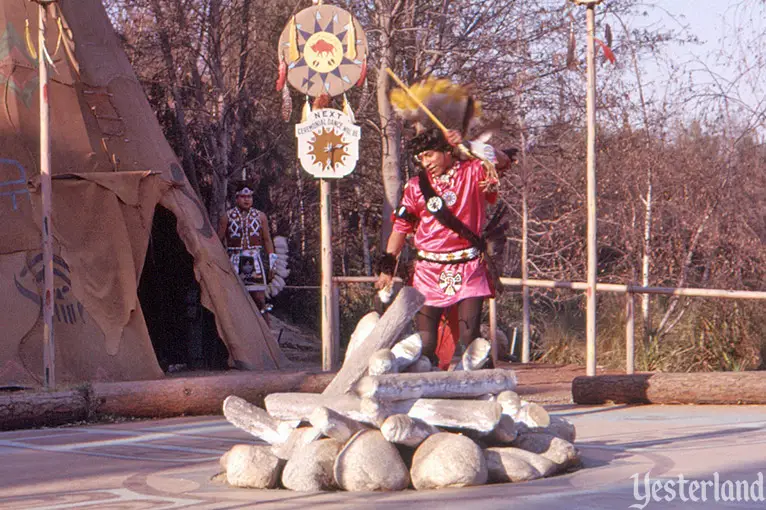
Photo by Charles R. Lympany, circa 1961, courtesy of Chris Taylor Free show at Frontierland’s Indian Village |
||||
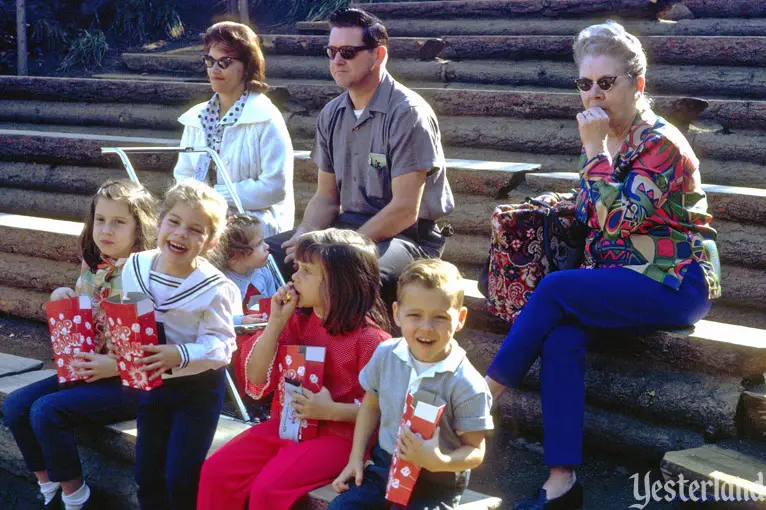
Photo by Charles R. Lympany, circa 1961, courtesy of Chris Taylor Good family entertainment and education |
||||
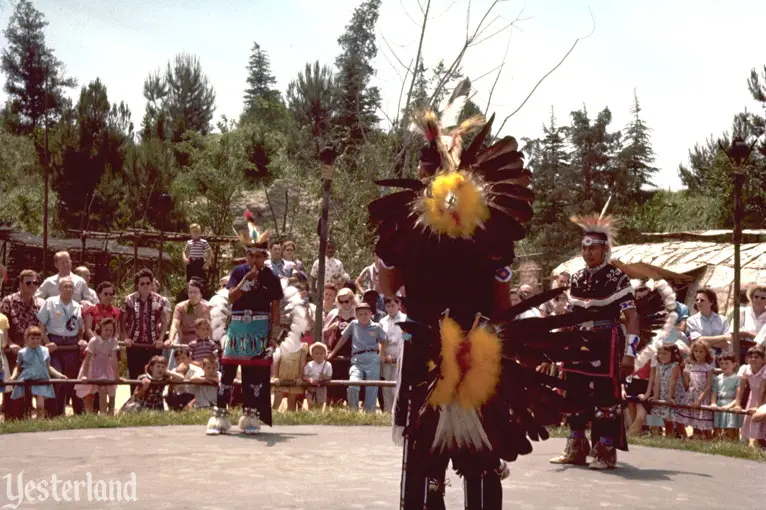
Photo by Merrill A. Garner, 1958, courtesy of M. Scott Garner Wilderness setting far from park’s busier parts |
||||
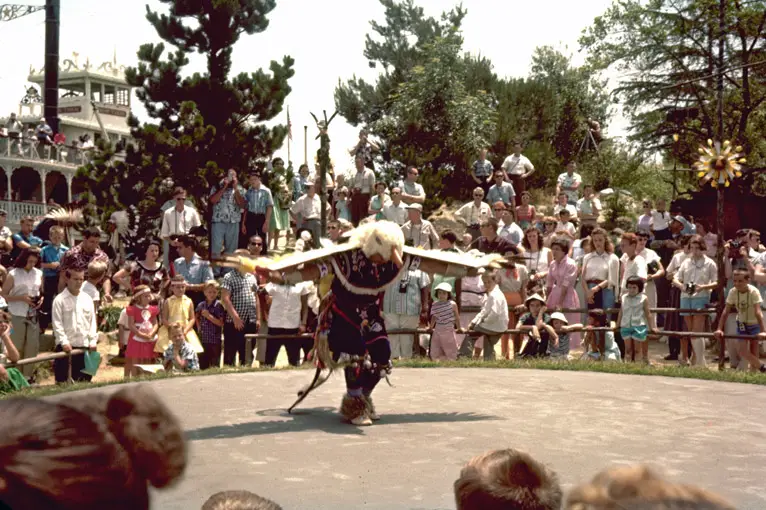
Photo by Merrill A. Garner, 1958, courtesy of M. Scott Garner The Eagle |
||||
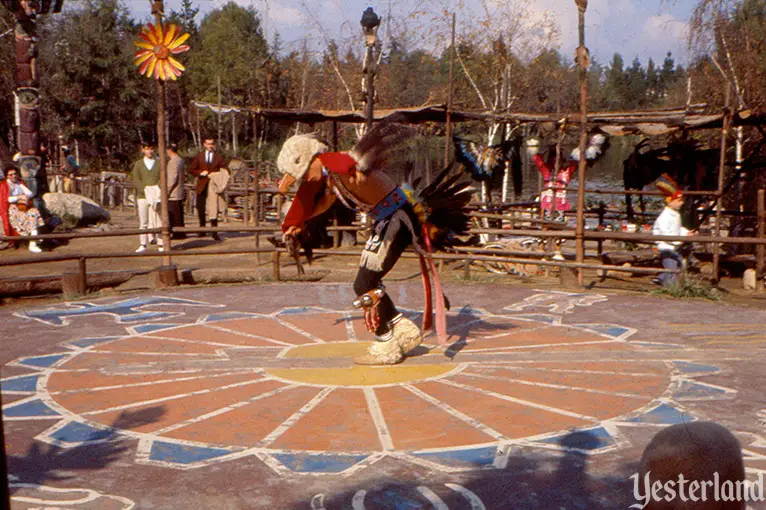
Photo by Roger J. Runck, 1961, courtesy of Robin Runck Another look at the Eagle |
||||
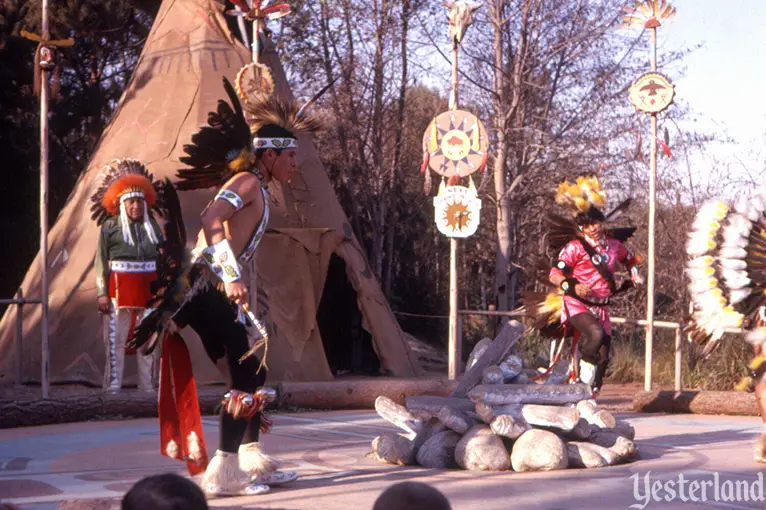
Photo by Charles R. Lympany, circa 1961, courtesy of Chris Taylor Authentic cultural performances |
||||
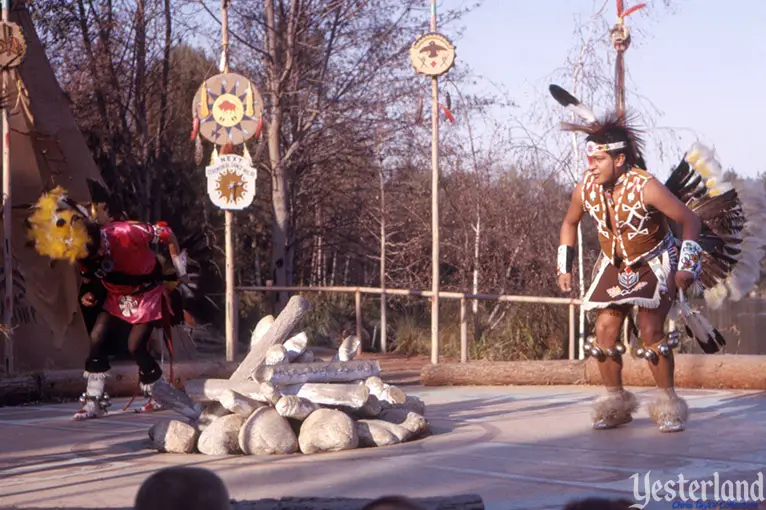
Photo by Charles R. Lympany, circa 1961, courtesy of Chris Taylor Authentic costumes |
||||
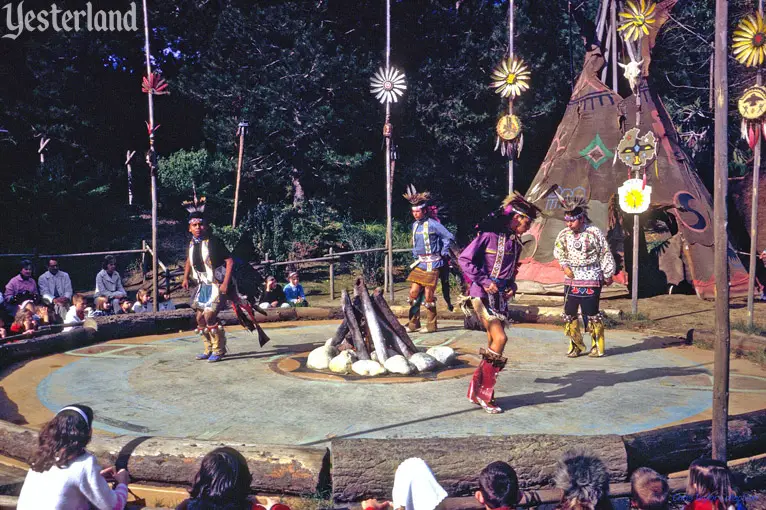
Photo by Charles R. Lympany, courtesy of Chris Taylor Real American Indians |
||||
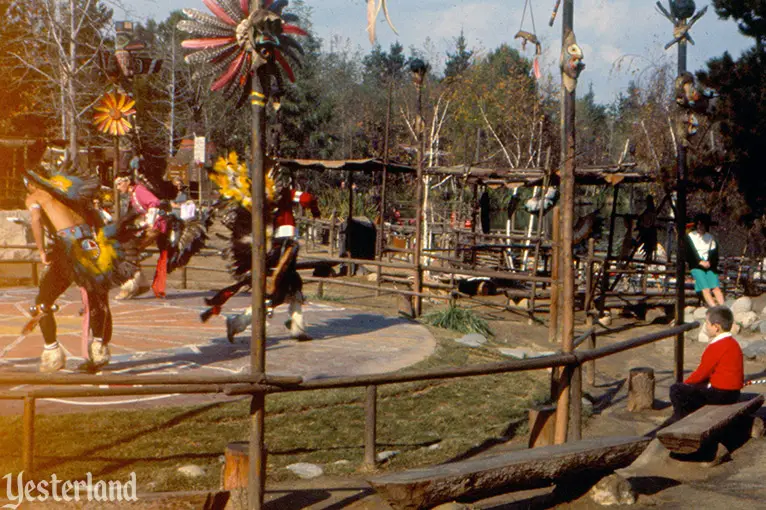
Photo by Roger J. Runck, 1961, courtesy of Robin Runck Ready to join the dancers? |
||||
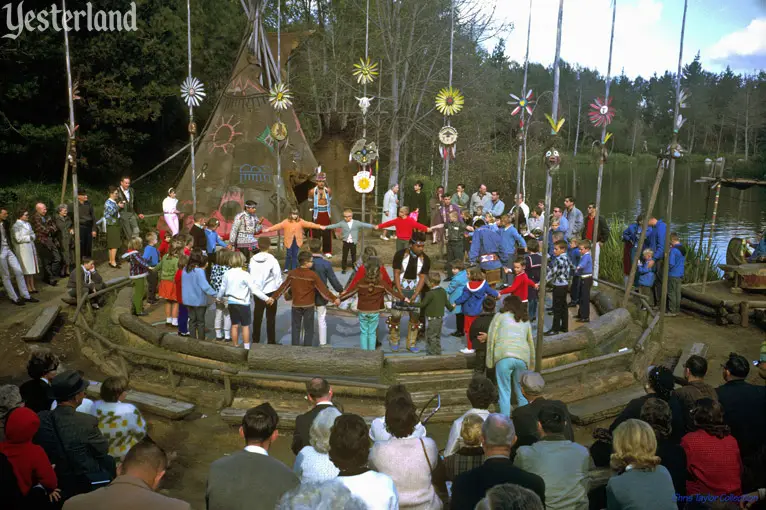
Photo by Charles R. Lympany, circa 1961, courtesy of Chris Taylor Friendship dances |
||||
|
If you’re a child, you’ll be invited to join the dancers for the Friendship dances. |
||||
|
|
||||
|
The Ceremonial Dance Circle was part of Disneyland’s second Indian Village, which opened in 1956. The Summer 1957 issue of Disneyland’s promotional magazine, Disneyland Holiday, described the park’s Indian Village and the dance performances: One of the founding principles upon which Disneyland was designed was the preservation of our American heritage. This principle may be seen in many of the free shows and exhibits in each of Disneyland’s realms—and one of the most popular among many free performances is the preservation of Indian traditions and customs in Frontierland’s Indian Village. Built on the banks of the Rivers of America, the Plains Indian settlement is authentic in every detail. Animal hide tepees, a birch bark “long house,” spears and other implements and especially the population of real Indians take visitors into a World which has disappeared from the American scene. Highlight of a visit to the village is the performance of ceremonial dances by the representatives of 16 tribes. With bright feathers and beads decorating their colorful headdresses, moccasins and other articles of clothing, the Indians perform such generations-old ceremonies as the Friendship Dance, Indian symbol of welcome to visiting tribes; the Scout Dance, oldest Indian dance, keynoted by freedom of expression; the Horse Tail, Eagle, Buffalo and Warrior Shield dances. All have specifc meanings for the Indians—messages that are related to visitors by Chief Shooting Star, a Sioux, while Lee High Sky (Shawnee), Little Arrow (Winnebago), Eddie Little Sky (Sioux) and other representatives of America’s true natives perform. Nearby, as the sound of Indian chants and drums carry through the settlement from the Ceremonial Dancing Circle, Indian war canoes glide away from shore for a trip around the Rivers of America. Paddled by guests themselves, the canoes are guided on these journeys by Indian braves, skilled in the handling of their craft. Among the tribes represented in Frontierland are Apache, Shawnee, Winnebago, Hopi, Navajo, Maricopa, Choctaw, Comanche, Pima, Crow and Pawnee. When the Indian Village closed in 1971 to make way for Bear Country (now Critter Country), so did the Dance Circle. The Hungry Bear Restaurant now sits about where the Dance Circle was. |
||||
|
|
Click here to post comments at MiceChat about this article.
© 1996-2018 Werner Weiss — Disclaimers, Copyright, and Trademarks Updated August 3, 2018. |
|||